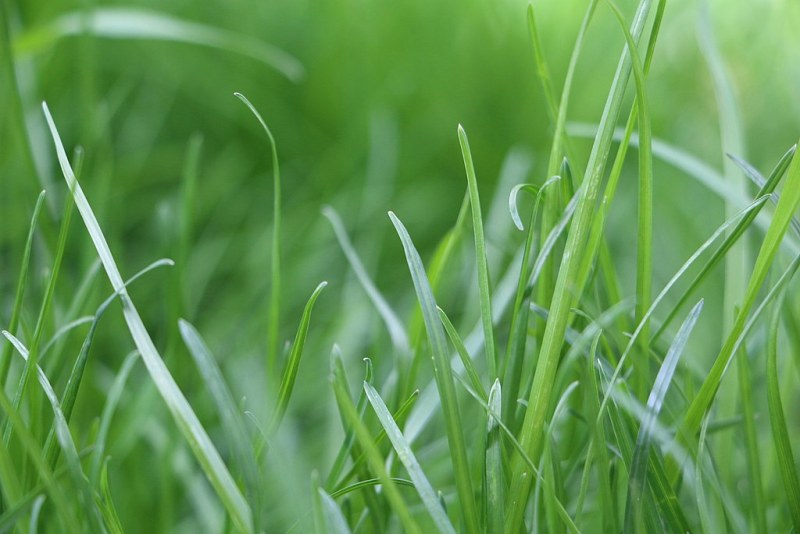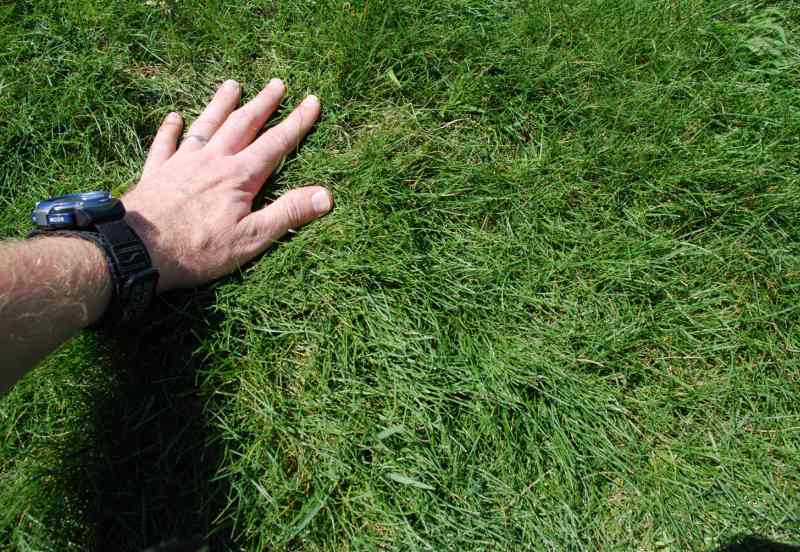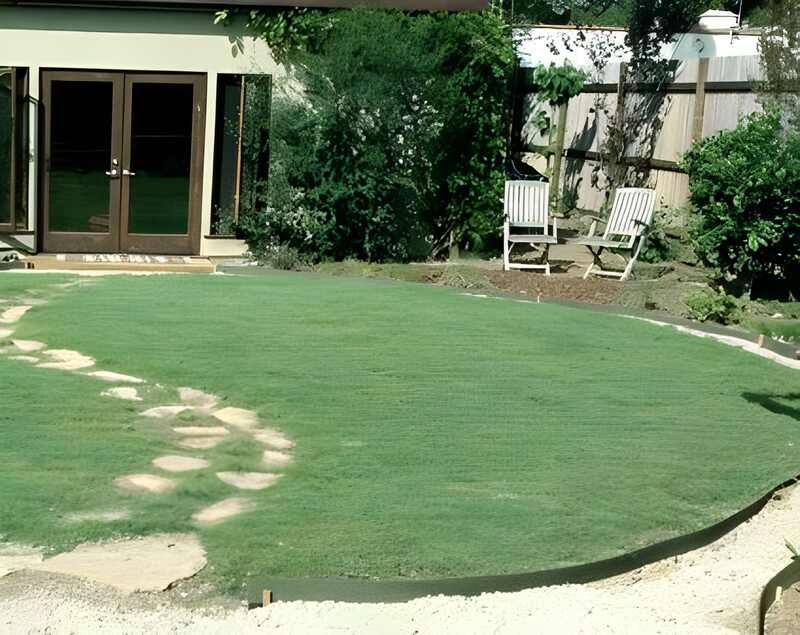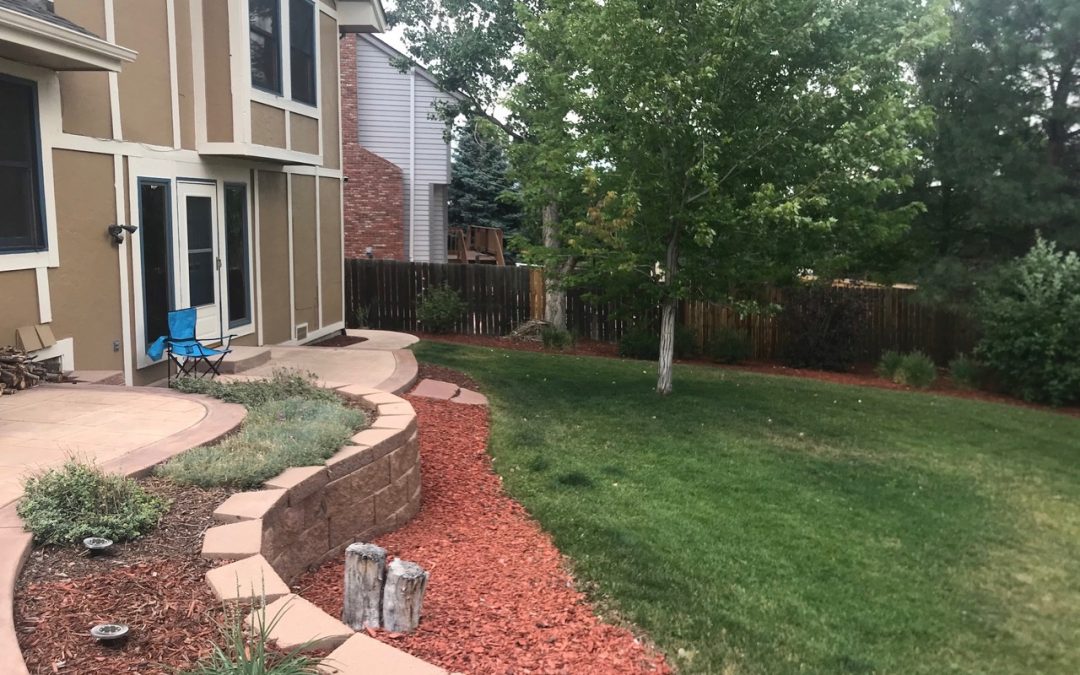Colorado’s third-largest city is known for its outdoor recreation and calming atmosphere, and at home, residents of Aurora often relax in backyards blanketed with a plush green carpet.
But how can you grow and maintain a beautiful lawn in Aurora?
With an elevation of approximately 5,400 feet, Aurora presents unique challenges in terms of landscaping and vegetation management. The best bets for a healthy lawn in this cooler and more arid climate are cool-season grass varieties.
Soil quality and available sunlight are two factors to consider when choosing any of these four best grass types in Aurora:
1. Kentucky Bluegrass

Photo Credit: Pilot138-17 / Wikimedia Commons / CC BY-SA 4.0
Known for its deep emerald color, Kentucky bluegrass is the most popular cool-season grass in the country. The dense growth of Kentucky bluegrass has a fine texture, and the coloration can appear blue at times. Kentucky bluegrass is the most common type of sod available.
Classification: Cool-season grass.
Spreads by: Rhizomes.
Shade tolerance: Kentucky bluegrass prefers full sun, but it tolerates some shade.
Drought tolerance: Kentucky bluegrass requires consistent irrigation. During times of drought, Kentucky bluegrass enters dormancy and returns when water becomes available.
Foot traffic tolerance: A very durable turf, Kentucky bluegrass is pleasant to walk on while barefoot.
Maintenance needs: Unfortunately, Kentucky bluegrass requires moderate to high maintenance. For growth, this grass type needs consistent fertilization, irrigation and sunlight.
Recommended mowing height: During the growing season, mow Kentucky bluegrass weekly and keep it at a maximum height of 3½ inches.
2 Fine Fescues

Photo Credit: Aaron Patton / Purdue’s Turfgrass Science Program
Tall and fine fescues come from the same plant family, and they do well in a blend. Together, these fescues will establish a sod-like covering that is quite dense. The mix of broad leaves from the tall fescue and narrow leaves from the fine fescue establishes a dynamic covering that requires relatively little maintenance.
Classification: Fescues are cool-season grasses.
Spreads by: Bunch-type, fescues have vertical shoots extending from the base that naturally form in clumps.
Shade tolerance: Fescues are fairly shade tolerant and do well with only partial sun.
Drought tolerance: Fescues also manage water well. Even with intermittent or absent irrigation, fescues grow fairly well. Both of these varieties do best in drier soil with proper drainage.
Foot traffic tolerance: This combination of fescues does well with even heavy use. Tall fescue is hardy and responds well to consistent traffic. Fine fescue also does well, but it is slower to recover from significant stress. However, with the mix of fescues, even a post-party lawn will still look lovely.
Maintenance needs: In general, fescues require little maintenance. Routine fertilization and pH balancing supports healthy growth, but thatching is not necessary. Irrigation management is an important aspect of caring for this turf as overwatering can encourage disease growth.
Recommended mowing height: Due to the mixture of seeds, there isn’t one specific target height. Mow weekly, and maintain a height of about 3 inches.
3. Perennial Ryegrass

Photo Credit: Dr Mary Gillham Archive Project / Flickr / CC BY 2.0
With a medium to dark green color, perennial ryegrass has a fine leaf texture. In addition to solo use, this turf variety is a common choice for overseeding and seed mixes.
Classification: Cool-season grass.
Spreads by: Bunch-type growth; this turf can appear patchy but is easily improved via overseeding.
Shade tolerance: Perennial ryegrass tolerates only limited shade as it prefers full sun for rapid photosynthesis.
Drought tolerance: Perennial ryegrass goes dormant when water is limited but returns quickly when regular irrigation resumes. In general, this turf has a moderate tolerance for drought.
Foot traffic tolerance: The rapid germination of perennial ryegrass helps it to recover quickly from overuse, making it a great choice for busy outdoor areas.
Maintenance needs: As a low-maintenance grass, this variety does not require dethatching and boasts a resistance to insects and diseases.
Recommended mowing height: Weekly mowing should keep the grass to a height of 1 to 2 inches.
4. Buffalograss

Photo Credit: Susan Harris / Flickr / CC BY 2.0
Buffalograss, dating back 7 million years, is named for the bison that grazed on this type of grass. A low-growing turf, buffalograss has curled leaves with a strong green color.
Classification: Warm-season grass.
Spreads by: Buffalograss spreads above-ground via stolons.
Shade tolerance: Buffalograss requires a minimum of six to eight hours of sunlight each day, and it greatly prefers full sun.
Drought tolerance: Buffalograss is one of the most drought-tolerant turf varieties. When water is lacking, this grass enters dormancy, but quickly returns when proper irrigation is provided.
Foot traffic tolerance: Buffalograss is not a good choice for athletic fields and other heavily used areas. However, Buffalograss can sustain moderate use or irregular heavy use.
Maintenance needs: Establishing a yard of buffalograss is labor-intensive, but once the grass takes hold, this turf requires little care or attention. You will, however, want to consider spring herbicides to combat summer weeds.
Recommended mowing height: Buffalograss, for a truly low-maintenance option, can be mowed just once or twice a year. More typically, trim buffalograss weekly and keep it to a height between 2 and 3 inches.
Aurora records an average of 243 sunny days each year, which is more sunshine than the average U.S. city. However, Aurora also gets quite a bit of snow.
Balancing the winter cold with the summer heat is an important part of choosing the best grass variety for your Aurora home. Whether you build snowmen or erect tree forts, a functional and lovely lawn is within reach.
Need help caring for your lawn? Find advice and tips in our Seasonal Guide to Lawn Care and Maintenance.
Main Photo Credit: Brenda Ryan / LawnStarter

